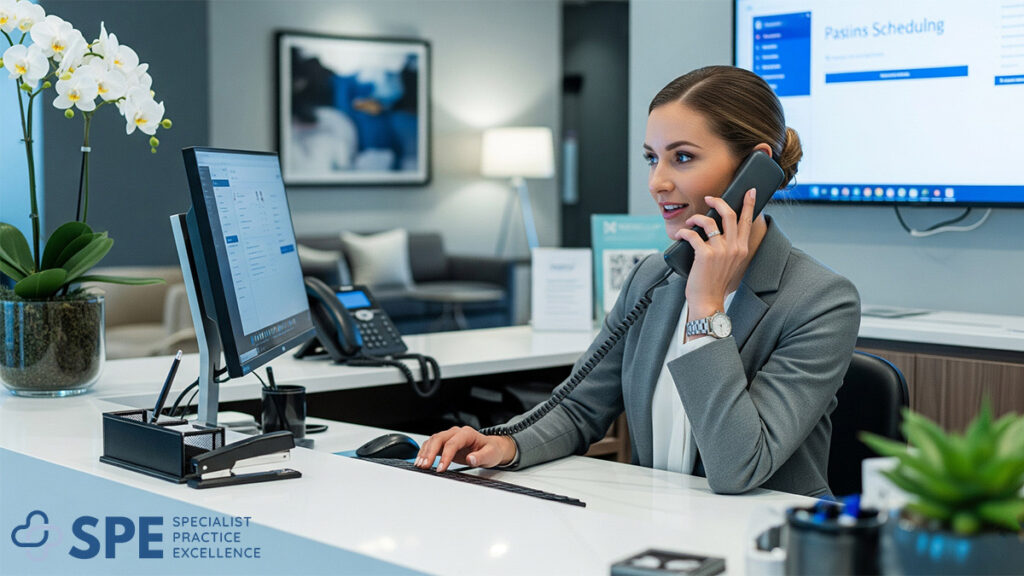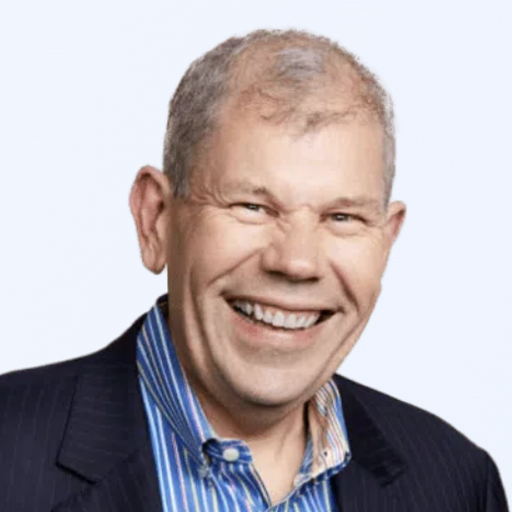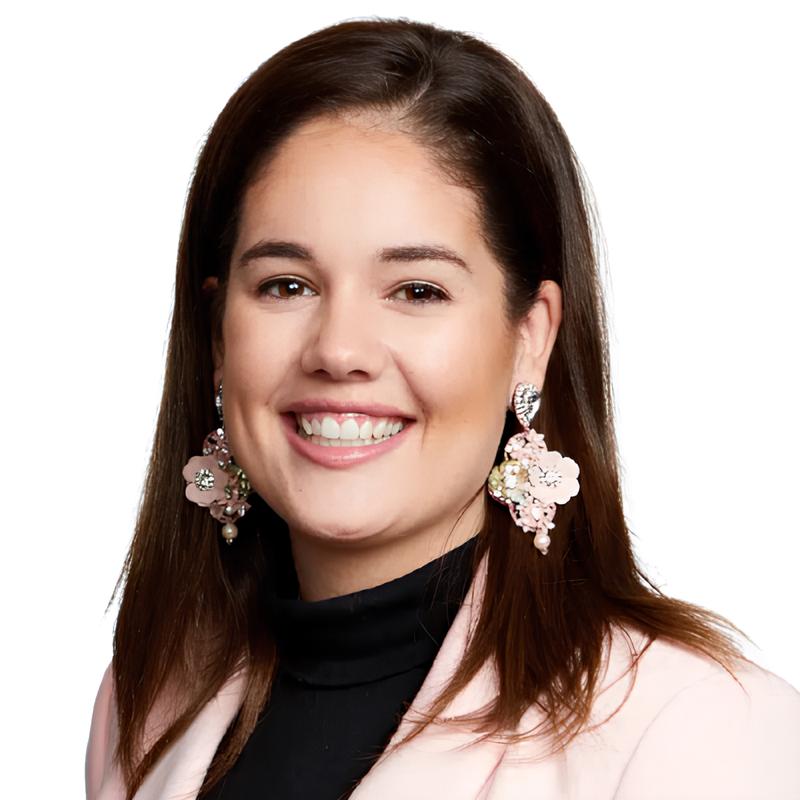Table of Contents
- Book More Aesthetic Patients with These Advanced Phone Skills & Techniques
-
- Q: Why do some aesthetic clinics lose patients at the very first phone call?
- Q: How can front desk / reception make aesthetic patients feel more comfortable over the phone?
- Q: What phrases should you avoid when handling cosmetic surgery enquiries?
- Q: Do patients really notice if the receptionist sounds rushed or distracted?
- Q: Should a clinic ever give prices over the phone?
- Q: What’s the best way to talk about costs or surgery price on the first phone call?
- Q: How can clinics follow up with patients who didn’t book on the first call without sounding pushy?
- Q: Why do patients often ask about price first when enquiring about cosmetic surgery?
- Q: How do advanced phone skills increase conversion rates for aesthetic enquiries?
- Q: What is the “nervous buyer” type and how should clinics handle them on the phone?
- Q: How do you recover from a badly handled enquiry phone call?
- Q: What’s the difference between answering enquiries and proactively booking patients?
- Q: Can AI or CRM systems really improve patient phone booking rates?
- Q: What’s the single most important skill for booking more aesthetic patients by phone?
- Q: Why should aesthetic practices invest in roleplay and call coaching for staff?
- Improve Your Advanced Phone Skills and Book More Patients
- Best Books on Inbound Phone Enquiries
- Further SPE Blog Reading for Advanced Phone Skills
Book More Aesthetic Patients with These Advanced Phone Skills & Techniques
The phone is one of the most powerful tools in any specialist practice. Every inbound call represents more than just a quick enquiry — it’s the beginning of a potential lifelong relationship. With patient enquiries costing hundreds of dollars to generate, and lifetime value stretching into tens of thousands, how you handle the first conversation can determine whether that lead becomes a loyal patient or a lost opportunity. Mastering these advanced phone skills is no longer optional — it’s essential for personal and practice growth.
1. Get Ready for Phone Success
Patients don’t call your practice just for the information — they call for reassurance, guidance, and connection. A single enquiry can lead to years of care, referrals, and trust.
But the truth is, most callers decide within the first minute whether they feel confident enough to book.
By creating the right phone environment and applying confidence-building techniques, you can turn every enquiry into an opportunity for lasting impact.
Remember It’s Not Just an Enquiry Phone Call — It’s a New Customer for life
Aesthetic enquiries can cost $100 to $500 each to acquire and every inbound call could represent:
- $5,000–$100,000 in lifetime value and repeat visits
- A potential long-term client and all their future referrals
- An opportunity for a great first impression
When you value every single enquiry, it shows — and callers will notice.
Optimise your Phone Environment for Success
Phone performance isn’t just about what you say — it’s also about where and how you say it.
Ensure you have:
- A good headset or quality microphone to avoid muffled sound
- A clutter-free desk for better focus
- Scripts, “Talk Tracks” (Phrases) and cheat sheets within easy reach
- A calm, controlled background (avoid noisy office chaos)
Consider a “Phone Excellence Station” setup with visuals, notes, and motivation nearby.
Make the most of your AI & CRM Tools to Automate and Improve
If you’re using an Automated CRM tools like GHL Go High Level, Active Campaign, Ontraport or HubSpot:
- Set up call outcome tagging (hot, warm, cold leads)
- Automate reminder follow-ups or info packs by email or text/SMS
- Trigger email and text messages or send booking links for post-call nurturing
Always focus on what happens after the call to keep the sale alive.
Handle Call Transfers Like a Handshake
If you need to transfer the call:
- Don’t just say: “Let me transfer you.”
- Say: “I’m going to introduce you to [Name], who’s best placed to help you with that. They’re fantastic.”
- When possible, give the next team member a heads-up summary:
“This is Mark — he’s enquiring about a full package and is looking to book this month.”
Make it feel seamless — not like the caller is being passed around. They don’t want to have to re-tell their whole story to the next person.
Develop Advanced Listening Skills
Aim to listen closely for:
- Key words that signal urgency (“I need this quickly”)
- Emotional cues (“I’m nervous about this”)
- Buying signals (“That sounds like what I’ve been looking for”)
- Stalling phrases (“I’ll check with my partner”)
Listening between the lines is what separates great salespeople from average ones.
2. Begin The Call the Right Way
Always Start with a Winning First Impression
- Smile before answering the call — it naturally lifts your tone and energy.
- Use a confident, warm greeting:
“Thanks for calling [Business Name] in [Location] — this is [Name]!” - Match the caller’s tone and speed — mirror their energy but stay clear and professional.
- Avoid robotic or rushed greetings. Make it sound like you’re gladthey called.
Build Trust in the First 30 Seconds
- Don’t launch into prices or availability straight away — take control of the call.
- Start with a rapport-building question:
“Is this your first time getting in touch with us?” - Use softeners:
“Would you mind if I ask a few quick questions first to better understand your needs?” - Practice tone control— keep it calm, upbeat, and customer-focused.
Use a Call Agenda to Set Up the Conversation
When a call begins, you can control the flow by setting their expectations.
Example:
- “Let me ask you a few quick questions to make sure I can guide you to the right option.”
- “I’ll walk you through everything and then we can go over prices and next steps, sound good?”
This builds call structure, authority, and comfort — and positions you as a professional advisor.
Use the 3-Step Question Strategy
Step 1: Discovery Questions
- “What are you hoping to achieve?”
- “What’s prompted you to call today?”
Step 2: Qualification Questions
- “Do you have a timeframe in mind?”
- “Is this something you’re comparing with other services?”
Step 3: Value Framing Questions
- “Would you prefer something basic, premium, or in between?”
- “Have you had experience with this type of service before?”
Master the Takeover Technique for Price or Date Shoppers
- Don’t answer price right away — take control:
“Just before I answer that, would you mind if I ask a few quick questions so I can give the right info?” - This technique avoids premature objections and allows time to build rapport and value.
3. Learn How to Influence
Personalise Every Call — Make Them Feel Like the Only Caller
- Use the caller’s name early and often — but naturally:
“Thanks for calling, Sarah — how can I help today?” - Reference their situation or goal later in the call:
“Since you mentioned you want surgery before your upcoming school reunion…” - Avoid treating calls like transactions. Instead, act like a concierge or trusted advisor.
- People remember how you made them feel — not just what you said.
Use Emotional Language to Create Desire
Highlight how the service will make the caller feel, not just what it does:
- “Most people feel so relieved once they’ve booked — it takes the stress away.”
- “You’ll walk out feeling confident and well looked after.”
- “It’s a great investment in your peace of mind.”
Help the team move beyond facts and into benefit-led storytelling.
Collect “Yes” Sets – Use “Yes” Momentum
- Get your caller thinking and saying yes (not no) a lot
- Use low-pressure yes questions to guide the conversation:
“Do you have a minute now to explore this?”
“Would it help if I explained a couple of options?” - Confirm the spelling of their name, their address, then phone number, even postcode, helps pile up the “Yeses”
- Collecting a series of small “yes”s builds comfort and control and makes big “yes”es less scary for the caller.
- At the end of the call – you want to ask the big yes next step questions – “so, you’d like to book a consult?”
4. How to Sound More Confident On The Phone
Use Phone Tone Variation to Build Trust and Interest
The best phone performers modulate tone intentionally:
- Use upbeat enthusiasm when describing benefits or successes
- Use a slower, calmer tone when handling objections or nerves
- Use a matter-of-fact, confident tone when quoting or booking
Monotone delivery loses energy and engagement — tone is your secret sales weapon.
Use Confidence Cues in Your Voice
- Use downward inflection to sound more authorative and certain at the end of sentences.
- Say: “Let me check that for you now.” (Downward tone at end)
- Not: “Let me check that for you now?” (Upward and Uncertain tone at end)
- Eliminate filler words like “um,” “just,” or “I think.”
- Pause for emphasis. Speak with clarity. Smile as you speak — it shows up in your tone.
Practice this regularly through playback, shadowing, and coaching.
Build Confidence When Quoting Prices
You will have more confidence with prices if you
- Practice quoting the highest package first, then the standard one
- Always frame price with value: “This includes X, Y, and Z, which means you won’t have to worry about…”
- Roleplay 10 different quote scenarios with curveballs when they say:
- “That’s too expensive”
- “I can get it cheaper elsewhere.”
- “Can I pay later?”
- “Why is it that much?”
Develop confidence not just to say the price — but to stand behind it.
Don’t abbreviate the cost to 12K or 15grand, it trivialises the cost and makes the product sound cheap and looks like you are frightened to tell them the fee.
Tell them the price in full $12,000 (Twelve thousand dollars) conveying your belief in what they are getting for that price.
Encourage Curiosity Over Assumption
Avoid jumping to conclusions:
- Don’t assume things based on accent, tone, or opening question
- Don’t guess their budget or motivations (they could be rich or have won lotto!)
- Always stay curious:
- “Tell me more about what you’re after…”
- “What’s most important to you in choosing a provider?”
Genuine curiosity leads to better outcomes and stronger connection.
Handling the “Nervous Buyer”
Some callers are emotionally unsure, nervous, or overwhelmed. You can
- Slow down and use reassuring language:
“It’s completely normal to feel unsure — we’re here to help.” - Use phrases like:
- “Let’s take it one step at a time.”
- “You’re in great hands — we do this every day.”
- “Would you like me to walk you through what usually happens?”
The calmer you are, the more confidence the caller will feel.
Learn the Art of “Tone Recovery”
If a call gets off to a bad start — the caller is rushed, grumpy, or sceptical — Aim to:
- Stay calm, don’t match their frustration
- Reset the tone with curiosity:
“Sounds like it’s been a busy day — happy to help make this bit easier.”
Even a difficult caller can be turned around with empathy, grace, and curiosity.
5. Use Techniques to Improve Conversion
Using Future Pacing to Get a Caller to Take Action
Future pacing gets callers imagining a positive outcome — increasing urgency and emotional investment.
Try:
- “Once we lock in your spot, you’ll have peace of mind that it’s all sorted.”
- “By next week, you could already have your consultation completed.”
- “Most people feel really relieved once they get this booked in.”
This technique makes inaction feel uncomfortable — and booking feel like progress.
Practice Talking about Value (before revealing your price)
- Avoid saying: “It’s expensive / cheap”— instead say:
- “What’s great about this service is…”,
- “The reason clients love this is because…”
- Use “because,” “so that,” and “which means” to link features to benefits.
Shiftsell and Upsell Tactfully
- Always have an upsell or backup ready:
“By the way, have you considered… because it might suit your needs better?” - Keep it helpful, not pushy — show them you’re looking out for their best outcome.
Anchoring Expectations
When quoting or offering packages, use anchoring to frame your price positively:
- “Some of our more comprehensive options are in the $7,000 – $5,000 range, but most clients find a great fit around $4,500.”
- “We offer premium and entry-level solutions — depending on what matters most to you.”
Leading with the higher-value anchor boosts conversion and perceived value.
Teach the Rule of Offering “Two Choices, One Action”
Whenever possible, offer two choices that both move the sale forward:
- “Would you prefer morning or afternoon?”
- “Would you like a callback or an email quote?”
- “Would you like to lock in a time now, or do you want to speak with someone first?”
This helps guide indecisive callers without making them feel pushed.
6. Learn How to Handle Objections
Apply the “Feel-Felt-Found” Method for Doubters
You can handle hesitation using this trusted empathy formula:
- “I totally understand how you feel…”
- “A lot of clients felt the same way at first…”
- “What they found is that once they came in/met with us, it really helped clarify things.”
It validates the caller’s concern without agreeing with their hesitation — and redirects them toward action.
Practice Objection Handling
Practice these real-life scenarios with your team:
When they say – “It’s too expensive.”
- “Yes, This is a significant investment. Let me explain why.”
- “Could I ask what you’re comparing that to?”
- “What would make it feel like good value to you?”
When they say – “I need to think about it.”
- “Absolutely, happy to give you time. Just out of curiosity, is there something that’s making you hesitate?”
When they say “I’m getting other quotes.”
- “Totally understandable. Just so I can help with the right info — what are you comparing us with so far?”
Prepare ‘Power Phrases’ for Common Objections and Scenario
Learn phrasing for tricky moments:
If they say “I’m not ready to book”
- “That’s totally fine. Many of our clients take a bit of time to decide. I can send you a quick info pack to review. Would that be helpful?”
If they say “I’ve seen it cheaper elsewhere”
- “Absolutely — there’s a big range in the market. The reason our clients choose us is because…”
If they say “Can I just think about it?”
- “Of course! I can check in with you next week in case you have any questions. Would that be helpful?”
Create Your Own Library of Best Practice Phrases
Build a collection of useful phrases to replace weaker language with more persuasive alternatives.
Instead of saying:
- “I’m not sure” → Say “Let me find out for you right now.”
- “It’s just a basic package” → Say “It’s a simple and popular choice for many first-timers.”
- “No, we don’t do that” → Say “Here’s what we can do instead…”
Update your scripts and cheat sheets with these upgraded options to sound confident and customer-focused.
7. Wrapping Up and Following Up
Never End a Call Without a Purpose or Next Step
End every call with one of these three:
- A booking
- A scheduled follow-up
- A value-adding action (sending a quote, info, or video)
- Agree on the Next Step – “You’ll do (action) and I’ll do (action)”
Always Ask for the Next Step
Never end a call with “Okay, let us know” — ask for the deal:
- “Would you like me to book that in now?”
- “Are mornings or afternoons better for you?”
- “Can I email you a quick quote to consider?”
Use trial closes based on personality types:
- “How does that sound?”(auditory)
- “How does that look?”(visual)
- “How do you feel about that?”(emotional)
- “What do you think?”(analytical)
Normalise the Follow-Up Conversation
Many callers won’t convert on the first call — and that’s okay. Aim to:
- Collect contact details every time, early in the call
“Just in case we get disconnected, what’s the best number/email for you?” - Mention that most people need timeto think it over
“A lot of our clients like to sleep on it — totally fine!” - Set a next stepbefore ending the call
“I’ll call back next week after you’ve reviewed the options. Would XXXday work?”
Following up isn’t annoying — it’s professional.
Use the “Call Debrief Formula”
After every call, aim to quickly note:
- Call Outcome— Did they book, quote, or decline?
- Key Info— What do we now know about the lead?
- Next Step— What should happen next? (Callback, email, etc.)
This builds awareness, accountability, and follow-through.
Design a ‘Call Recovery Script’ for Missed or Mishandled Enquiries
No one’s perfect — sometimes the call didn’t go well, or the team forgot to follow up.
Create a gentle re-engagement script:
- “Hi {Enquiry Name}, it’s [Name] from [Business] — I wanted to check in and apologise if we didn’t quite give you everything you needed last time. We’d love the chance to help you again.”
- Offer a small incentive or added value if appropriate:
“We’ve got some limited-time options I thought might be perfect for you.”
This shows integrity, accountability, and professionalism — all great brand qualities.
FAQs about Advanced Phone Skills
Q: Why do some aesthetic clinics lose patients at the very first phone call?
- Many practices underestimate the importance of the first phone interaction. If the call feels rushed, overly formal, or purely transactional, potential patients may feel undervalued and quickly look elsewhere. Patients are not just asking for information — they’re testing how comfortable and cared for they will feel if they choose your clinic. 30% of clinics don’t answer the phone at all (calls are unanswered). Many initial phone calls just get the basic information and a processed – they asked for the price and were told, they asked a question and it was answered – there was no effort at caller conversion – rapport building, taking over and asking questions, building agreement and asking for the next step.
Q: How can front desk / reception make aesthetic patients feel more comfortable over the phone?
- Using tone variation, empathy phrases, and curiosity-driven questions builds trust. Simple techniques like smiling before answering, using the patient’s name, and avoiding jargon help callers feel safe and understood. Patients want reassurance as much as they want information. Sound friendly and ask more
Q: What phrases should you avoid when handling cosmetic surgery enquiries?
- Avoid dismissive or minimising language like “It’s just our standard package” or “I’m not sure.” These make the practice sound uncertain or careless. Instead, replace them with value-driven alternatives such as “It’s one of our most popular choices” or “Let me confirm that for you right now.”
Q: Do patients really notice if the receptionist sounds rushed or distracted?
- Yes — tone, pace, and background noise all impact perception. Callers can sense whether they have your full attention. Even subtle distractions can make them feel like they’re not a priority, which is dangerous in a market where every enquiry can be worth thousands of dollars.
Q: Should a clinic ever give prices over the phone?
- Yes, but not as the first answer. First, qualify the patient’s needs, timeline, and expectations. Then present prices confidently and with context. This prevents sticker shock and keeps the conversation centred on outcomes rather than cost alone.
Q: What’s the best way to talk about costs or surgery price on the first phone call?
- Always frame cost in the context of value. Quote the full amount confidently and link it to inclusions and benefits. For example, “The fee is $12,000, which includes your hospital, anaesthetist, and all aftercare — so you don’t have to worry about unexpected costs.” This builds confidence instead of hesitation.
Q: How can clinics follow up with patients who didn’t book on the first call without sounding pushy?
- Normalize follow-ups by setting the expectation during the call: “Most of our clients like to take a few days to think about it — I’ll give you a quick call next week to check in.” This makes the follow-up feel like part of the service, not pressure.
Q: Why do patients often ask about price first when enquiring about cosmetic surgery?
- Price is the easiest question to ask — it feels safe and objective. But in reality, most patients are trying to gauge whether the clinic is approachable, trustworthy, and aligned with their goals. Redirecting the conversation to needs and outcomes allows you to address their deeper concerns.
Q: How do advanced phone skills increase conversion rates for aesthetic enquiries?
- They create structure, build rapport, and reduce objections before they surface. By using discovery questions, future pacing, and micro-yes strategies, your team can move patients from curiosity to commitment in a natural and supportive way.
Q: What is the “nervous buyer” type and how should clinics handle them on the phone?
- A nervous buyer is someone who feels anxious, overwhelmed, or uncertain about surgery. They need reassurance, slower pacing, and empathy-driven phrases like “It’s completely normal to feel unsure — we’ll guide you step by step.” By calming their fears, you increase trust and likelihood of booking.
Q: How do you recover from a badly handled enquiry phone call?
- A simple re-engagement call can make all the difference: “Hi Sarah, I wanted to check in and make sure you got all the information you needed. We’d love the chance to help you again.” Adding a small incentive, like a priority appointment, shows integrity and care.
Q: What’s the difference between answering enquiries and proactively booking patients?
- Answering enquiries is reactive — simply providing information. Booking patients is proactive — guiding the conversation with questions, value framing, and confidence to lead the caller toward the next step. Clinics that train for the latter consistently outperform competitors. It’s the difference between an order taker and sales maker.
Q: Can AI or CRM systems really improve patient phone booking rates?
- Yes — AI and CRM tools streamline follow-ups, trigger personalised SMS or email nurture sequences, and track call outcomes. They ensure no lead is lost and every patient feels supported from first contact through to booking. Technology amplifies, but doesn’t replace, human connection on the phone.
Q: What’s the single most important skill for booking more aesthetic patients by phone?
- Confidence with empathy. Patients want to feel reassured, but they also need to hear conviction in your voice. When your team combines warmth with authority, patients trust they are making the right decision by choosing your clinic.
Q: Why should aesthetic practices invest in roleplay and call coaching for staff?
- Because confidence is built through practice. Roleplaying objection scenarios (“It’s too expensive,” “I need to think about it”) prepares staff for real-world situations so they don’t freeze or stumble. Continuous coaching sharpens tone, timing, and phrasing, leading to higher conversion rates.
Improve Your Advanced Phone Skills and Book More Patients
Every phone call is more than a transaction — it’s the beginning of trust, connection, and opportunity. By applying advanced phone techniques, creating structure, and building confidence in every conversation, your team can transform enquiries into long-term relationships that fuel practice growth.
Remember, success on the phone isn’t about scripts alone — it’s about tone, empathy, and genuine curiosity. When callers feel valued and understood, they are far more likely to choose your practice and stay loyal for years to come.
In a competitive aesthetic market, the practices that master the first phone call are the ones that consistently book more patients, build stronger reputations, and achieve sustainable growth.
Commit to continuous practice, coaching, and improvement.
Best Books on Inbound Phone Enquiries
- Stop, Ask and Listen by Kelley Robertson
- How to Sell More in Less Time with no Rejection by Art Sobczak – Volume 1 and 2
- Telephone Tips that Sell by Art Sobczak











